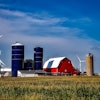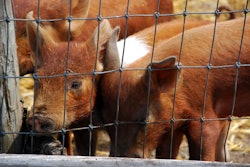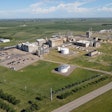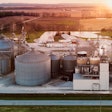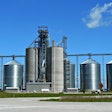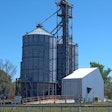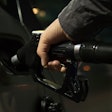Attorneys with the law firm Epstein Becker Green's OSHA practice office in Washington, D.C. recently resolved a citation delivered by OSHA to an IL grain company due to an sweep auger violation. The citation was withdrawn and the agency agreed to allow employees to work in grain bins with energized sweep augers in the future assuming they comply with the agreed upon terms of the 10 Sweep Auger Safety Principles outlined in its settlement agreement.
Below is the list of Sweep Auger Safety Principles that OSHA, at the national office level, has agreed to, and which should now serve as guidance to the industry for how to perform sweep auger operations in compliance with the Grain Standard:
- In accordance with 29 CFR 1910.272, no employee shall enter a grain bin until after completion of a bin entry permit, which confirms there are no engulfment and/or atmospheric hazards present inside the storage bin, or unless the employer or the employer’s representative who would otherwise authorize the permit remains present during the entire entry. A qualified person shall complete the grain bin hazard evaluation.
- Before entering the bin to set up or dig out the sweep auger, the subfloor auger and the grain entry points must be de-energized and locked out.
- Before operating the sweep auger, the grate/guard on the subfloor auger must be in place and secured.
- Employees operating the sweep auger cannot walk on the grain, if the depth of the grain presents engulfment hazard.
- It shall require that the sweep auger is provided with guards and covers per the manufacturer’s design, and the only unguarded portion of the sweep auger is the point of operation.
- A rescue trained and equipped observer, in accordance with 1910.272(g), must always be positioned outside the storage bin monitoring the activities of all workers inside the bin.
- If a worker is to enter the bin while the sweep auger is energized, the employer must utilize engineering controls within the grain bin to prevent workers from coming into contact with the energized sweep auger. The use of only administrative controls without the use of an engineering control is not a sufficient means of worker protection. Acceptable engineering controls may include:
a. Sweep auger equipped with an attached guard, which prevents the workers contact with the unguarded portion of the auger in accordance with 1910 subpart
b. Sweep auger equipped with a control mechanism, such as a dead-man switch or other similar device, which will allow for the sweep auger’s operation only when the operator is in contact with device. If this method is utilized as a means of worker protection, the worker must be positioned at least 7 feet from the auger at all times it is energized; moreover, if worker(s) in addition to the operator of the sweep auger are in the bin, additional engineering controls (such as those described in section 7 of this criteria) must be used to protect those worker(s).
c. Portable guardrails are permissible, provided they are placed at least 7 feet behind the sweep auger. Note: The use of a warning line, or other easily removable device, other than a portable guardrail, is not considered sufficient engineering controls. - The auger must be provided with a positive speed control mechanism or bin stop device that prevents the uncontrolled rotation of the sweep auger.
- Workers are prohibited from using their hands, legs or other similar means to manipulate the sweep auger while it is operating.
- If maintenance/adjustments are necessary to the sweep auger, the sweep must be unplugged, with the person making the adjustments maintaining the control of the plug, or locked out in accordance with lockout/tagout procedures.



